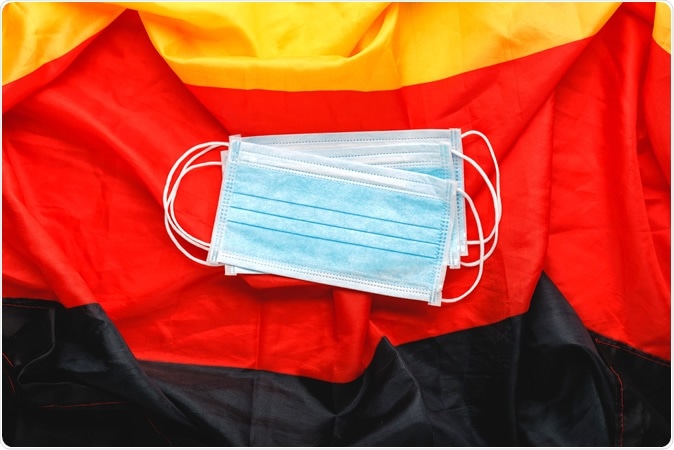The coronavirus disease (COVID-19) global pandemic is wreaking havoc across the globe, affecting 1.85 million people and has killed more than 114,000 people. The respiratory illness, akin to the SARS and MERS epidemics in the past, is infectious and dangerous to vulnerable populations, such as older adults and those with underlying health conditions.
Many countries have imposed health measures to combat COVID-19. Now, the German National Academy of Sciences Leopoldina has published a paper that looks to identify and promote measures relevant to health amid the coronavirus pandemic. These measures will contribute to a gradual normalization of public life.

The German National Academy of Sciences Leopoldina has published a second ad-hoc-statement entitled “Coronavirus Pandemic – Measures Relevant to Health”. The paper focuses on measures relevant to health, which can contribute to a gradual normalisation of public life. Three measures are particularly important: (1) general use of mouth and nose protection, (2) short-term use of mobile phone data and (3) increase in testing capacities. Image Credit: Beton Studio / SHutterstock
During the outbreak of COVID-19 in China, many cities and provinces were shut down. Wuhan City in Hubei Province, the epicenter of the pandemic where the virus first emerged, was locked down to prevent people from leaving as well as promote social distancing. When the outbreak further spread throughout the world, several countries followed.
In this new paper titled, ‘Coronavirus Pandemic – Measures Relevant to Health’, the German National Academy of Sciences Leopoldina (GNASL) provides a set of recommendations to contain the coronavirus pandemic, including the general use of mouth and nose protection, the use of mobile phone data, and increasing testing capacities.
Germany has reported that the number of new infections in the country is slowing down since 2nd April 2020 and that the measures imposed by the government to promote social distancing should be maintained.
Germany has reported 127,854 cases and 3,022 deaths as of 12th April 2020.
Mouth and nose protection
Mouth and nose protection, mainly using masks, reduces the transmission of viruses. Masks limit transmission since the coronavirus disease is transmitted via respiratory droplets.
Further, most cases of COVID-19 are asymptomatic, which means they do not know they are infected. When everyone wears masks, they are protected, and this will reduce the spread of the infection.
Using masks should be used hand in hand with the gradual relaxation of the restrictions. For instance, even if restrictions are lifted, people should be using them when in public places, such as schools, public transports, and workplaces.
Mobile phone data
Mobile phone data can help identify infection people and their contact with others. Applications for mobile phones should be made available, which can help tract those who are carriers. This way, when the restrictions are lifted, proper isolation and contact tracing will be sufficient.
Increase testing capacities
Mass testing is crucial in the battle against the coronavirus pandemic. It is essential to test as many people as possible to identify carriers, even those who are not showing any symptoms of the disease.
Asymptomatic carriers can still transmit the virus to other people. If they are left to socialize with others, the cases will skyrocket again, and another lockdown will be needed.
Though in Germany, the testing capacity increased to 350,000 tests per week, it should be further increased to test as extensively as possible. This way, health authorities can identify infected patients and impose adequate quarantine measures.
The Germany-wide temporary shutdown of about three weeks, with consistent physical and social distancing, is vital at this time. The measure will limit the contact of people with each other, and at the same time, prevent the vast spread of the virus, thus, reducing the burden on the healthcare system.
All measures following the shutdown should focus on developing drugs and vaccines, and at the same time, assuring testing capacities for patients and all who will enter the country.
Across the globe, the virus spread is rapidly unfolding, with many countries gravely affected. The United States has the most number of confirmed cases, with 557,300 infections and more than 22,000 deaths. Following the United States is Spain, with more than 166,000 cases, Italy with more than 156,000 cases and France with more than 133,000 confirmed cases.